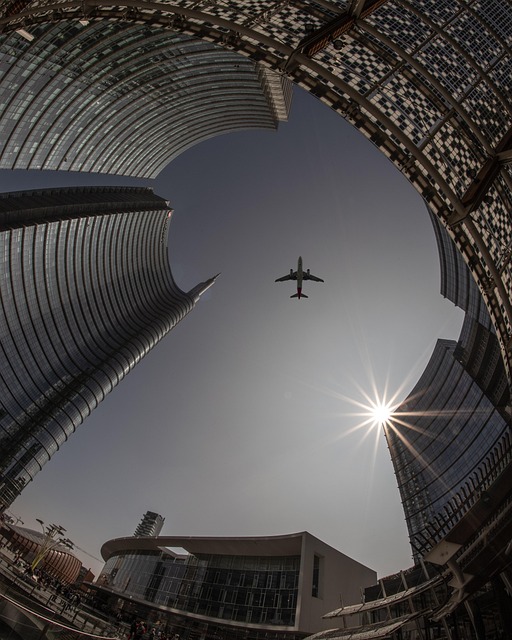Architectural Tourism: Seeing Cities Through Their Skyscrapers
The vertical marvels that punctuate our urban skylines represent more than just architectural achievements – they tell stories of cultural ambition, technological innovation, and historical significance. Architectural tourism centered around skyscrapers offers a unique lens through which travelers can understand a city's identity, economic history, and artistic vision. This growing travel trend attracts both architecture enthusiasts and casual tourists seeking to experience cities from breathtaking heights, while appreciating the engineering feats that define our modern urban landscapes.

The Evolution of Skyline Tourism
Skyscrapers have fascinated the public since the early 20th century when cities like New York and Chicago pioneered vertical construction. The Empire State Building, completed in 1931, wasn’t just an architectural marvel but became an immediate tourist attraction, setting the precedent for skyscraper tourism. Today’s architectural tourists are more sophisticated, seeking not just height experiences but understanding of design philosophy, sustainability practices, and cultural context. This evolution reflects our changing relationship with urban spaces and growing appreciation for architectural narratives. Modern skyline tourism now incorporates specialized tours, photography workshops, and even academic study programs focused on vertical urbanism and its impact on city development.
Beyond the Observation Deck
While traditional skyscraper visits often center around observation decks, today’s architectural tourism goes much deeper. Specialized tours now offer behind-the-scenes access to mechanical floors, architectural studios that designed the buildings, and historical preservation efforts. In cities like Shanghai, visitors can book progressive tours that follow the evolution of skyscraper design from the 1920s to today’s supertall structures. Some buildings now offer architectural workshops where visitors learn about sustainable design principles or participate in miniature model-building activities. The most innovative experiences include augmented reality applications that allow tourists to visualize buildings during various construction phases or see proposed future developments while standing at rooftop viewpoints, creating multi-dimensional understanding of urban development.
Regional Architectural Identities
Every skyline tells a different story, reflecting regional values, environmental conditions, and cultural aspirations. Middle Eastern skyscrapers like Dubai’s Burj Khalifa often emphasize technological superlatives and incorporate Islamic design elements. Asian towers frequently balance modernism with traditional philosophies – Singapore’s Gardens by the Bay exemplifies this fusion of futuristic architecture with natural elements. European skyscrapers typically navigate historical contexts, often clustering in designated business districts to preserve historic centers. North American skyscrapers, particularly in New York, embrace varied architectural styles that document changing design paradigms through decades. Understanding these regional differences allows architectural tourists to appreciate not just individual buildings but entire skylines as cultural expressions, reading cities like three-dimensional history books that continue being written upward.
Photography and Social Architecture
Social media has transformed architectural tourism, with Instagram-worthy viewpoints and distinctive facades becoming major travel motivators. Photography-focused architectural tours have surged in popularity, guiding visitors to optimal angles, lighting conditions, and unique perspectives for capturing iconic structures. Buildings themselves increasingly incorporate design elements specifically intended as photography opportunities – from the honeycomb-like British Museum roof to the undulating curves of Zaha Hadid’s structures. Professional photographers now offer specialized workshops teaching techniques for capturing architectural details, playing with perspective, and mastering interior architectural photography. This social dimension has democratized architectural appreciation, bringing design consciousness to broader audiences while challenging architects to consider how their work will be photographed and shared across global platforms.
Sustainable Skyscraper Experiences
As environmental consciousness grows, a new subset of architectural tourism focuses specifically on green skyscrapers and sustainable urban design. Buildings like Taipei 101, once known primarily for its height, now attract visitors interested in its LEED certification and sustainability features. In Copenhagen, visitors can tour the waste-to-energy plant Amager Bakke, featuring a ski slope on its roof – representing a new model where infrastructure becomes both functional and recreational. Singapore’s vertical gardens and Malaysia’s biodiversity-focused towers offer tours explaining how building design can counter urban heat island effects and support wildlife. This sustainability-focused approach to architectural tourism connects travelers with innovative solutions to climate challenges while demonstrating how cities can grow upward responsibly, creating educational experiences that inspire visitors to consider environmental impact in their home communities.
Essential Knowledge for Skyscraper Enthusiasts
-
The term “supertall” officially applies to buildings exceeding 300 meters, while “megatall” designates those over 600 meters.
-
Visiting skyscrapers during transition hours (late afternoon to early evening) offers opportunities to see both daylight views and nighttime illumination.
-
Many iconic skyscrapers house museums documenting their construction and historical significance.
-
Wind behavior changes dramatically at higher elevations – even on clear days, observation decks can experience gusts up to 30mph stronger than ground level.
-
The best skyscraper photography often comes from neighboring buildings rather than street level – research alternative viewpoints before your visit.
-
Skyscraper restaurants typically require reservations weeks in advance, but often bar areas accept walk-ins with similar views.
-
Temperature differences between ground level and observation heights can be significant – bring layers even on warm days.
The Future of Vertical Exploration
As architectural tourism continues evolving, we’re seeing integration of technology creating more immersive experiences. Virtual reality installations now allow visitors to experience buildings during different historical periods or witness construction processes. Architectural tours increasingly incorporate interdisciplinary elements, connecting buildings to literary references, film appearances, or scientific innovations. The most forward-thinking skyscrapers are becoming cultural complexes housing museums, performance spaces, and educational facilities alongside observation experiences. This holistic approach to architectural tourism transforms passive viewing into active engagement with urban environments, inviting travelers to understand cities not just as destinations but as dynamic expressions of human creativity and technical achievement. By exploring urban environments through their vertical dimensions, travelers gain unique perspectives that forever change how they experience the cities beneath their feet.





